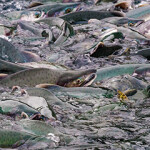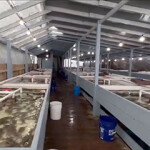Buyers advocate further Northeast Atlantic pelagic quota cuts

The latest catch-limit advice for Northeast Atlantic pelagic stocks issued by the International Council for the Exploration of the Sea (ICES) show that fishing pressure is above sustainable levels and that further reductions are required, according to the North Atlantic Pelagic Advocacy Group (NAPA).
ICES advised the 2023 catch for Northeast Atlantic mackerel should be no more than 782,066 metric tons (MT); a 1.6 percent reduction from its 2022 advice. However, in a statement released ahead of its annual coastal states meetings, NAPA said the agreed 2022 total allowable catch (TAC) was set at 1,131,416 MT. Therefore, to follow the ICES advice in 2023, a cut of 31 percent is required, it said.
Similarly, ICES advised 2023 catch for Atlanto-Scandian herring is no more than 511,171 MT; a 14.6 percent reduction from the 2022 advice. However, in 2022 there was no agreement on the TAC; the sum of the declared unilateral quotas from the individual parties was 827,963 MT. NAPA said that in order to follow ICES’ advice next year, a cut of 38 percent is required.
The overfishing of these stocks is having “a major impact on seafood businesses,” from the catching sector through to retailers, it said.
“The mismanagement of these fisheries has so far resulted in the loss of Marine Stewardship Council (MSC) certification,” it said. “Loss of certification implies that fisheries are no longer publicly-recognized against well-known independent certification programs for fisheries sustainability.”
In regard to the increased advice for blue whiting – no more than 1,359,629 MT; an 81 percent increase from 2022 – NAPA warned the uptick is not due improved stock management.
“On the contrary, unprecedented levels of recruitment have flooded the fishery, effectively masking the underlying problems of inadequate management and governance, which mackerel, herring, and blue whiting collectively suffer from,” it said.
The blue whiting recruitment is now estimated to be at a historical high of 71.6 billion fish, compared to last year’s estimate of 22.8 billion.
2022’s preliminary catch was calculated to be 1,107,529 MT. As such, compared to 2022, there is an opportunity for a 23 percent increase in the TAC.
“The elevated advice for blue whiting offers a golden opportunity to coastal states. The revised estimates of abundance allow all parties to scale back their allocations and ensure the TAC does not exceed the scientific advice without taking real-term cuts. Will they seize this chance?” NAPA said.
NAPA said the blue whiting fishery had also lost its MarinTrust certification, which is conditional on MSC certification.
“The knock-on effect on the biggest customer of the fishery, salmon aquaculture, is a significant step back in responsible business practice and will impact retailer and foodservice companies, as well as consumers, who demand sustainable marine ingredients in feed,” it said.
Formed in 2019 in response to the ongoing dispute over Northeast Atlantic quota allocations, NAPA has more than 50 members covering foodservice businesses, processors, buyers and retailers from Europe, Africa, North America, and Japan. Collectively these companies have an EUR 802 million (USD 781.5 million) share of Northeast Atlantic pelagic purchasing.
NAPA maintains the conditions that have led to this overfishing are political, and that coastal states merely need to agree on catch shares that follow ICES’ advice. If no improvements are made, then individual NAPA members will review their purchasing decisions, with some businesses pledging to cease sourcing from the fisheries.
Photo courtesy of Arild Lilleboe/Shutterstock






Share